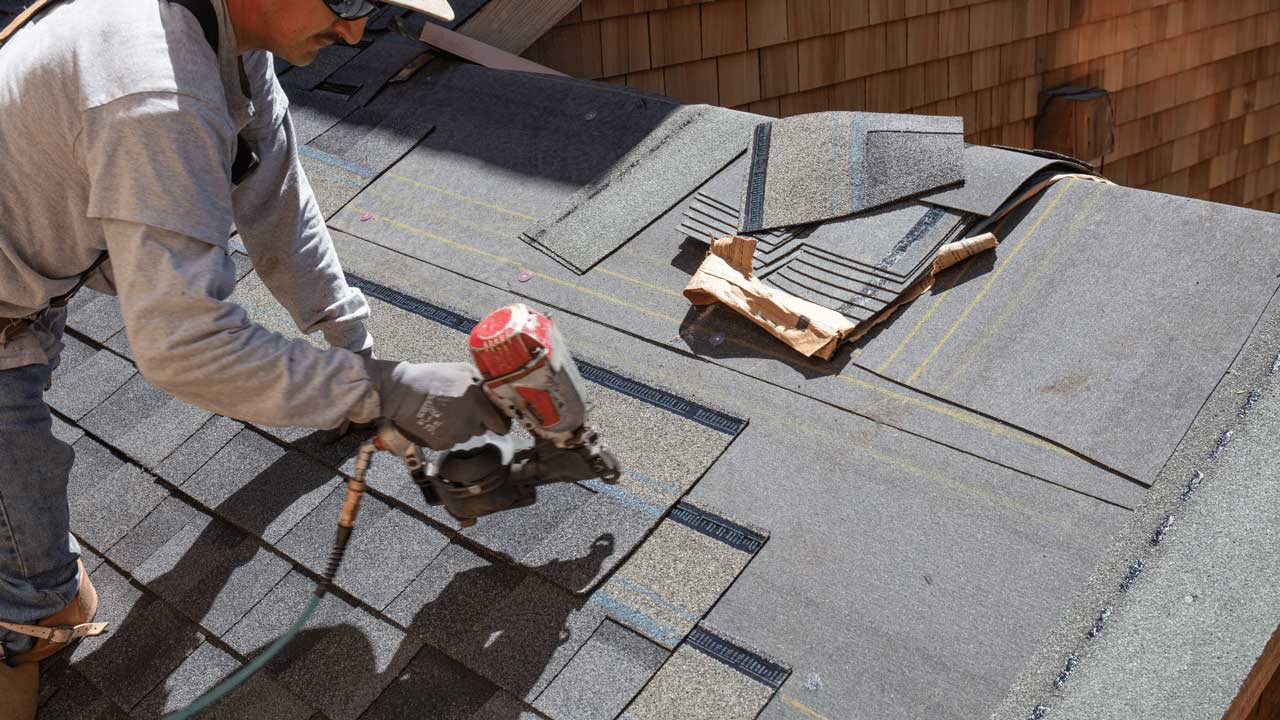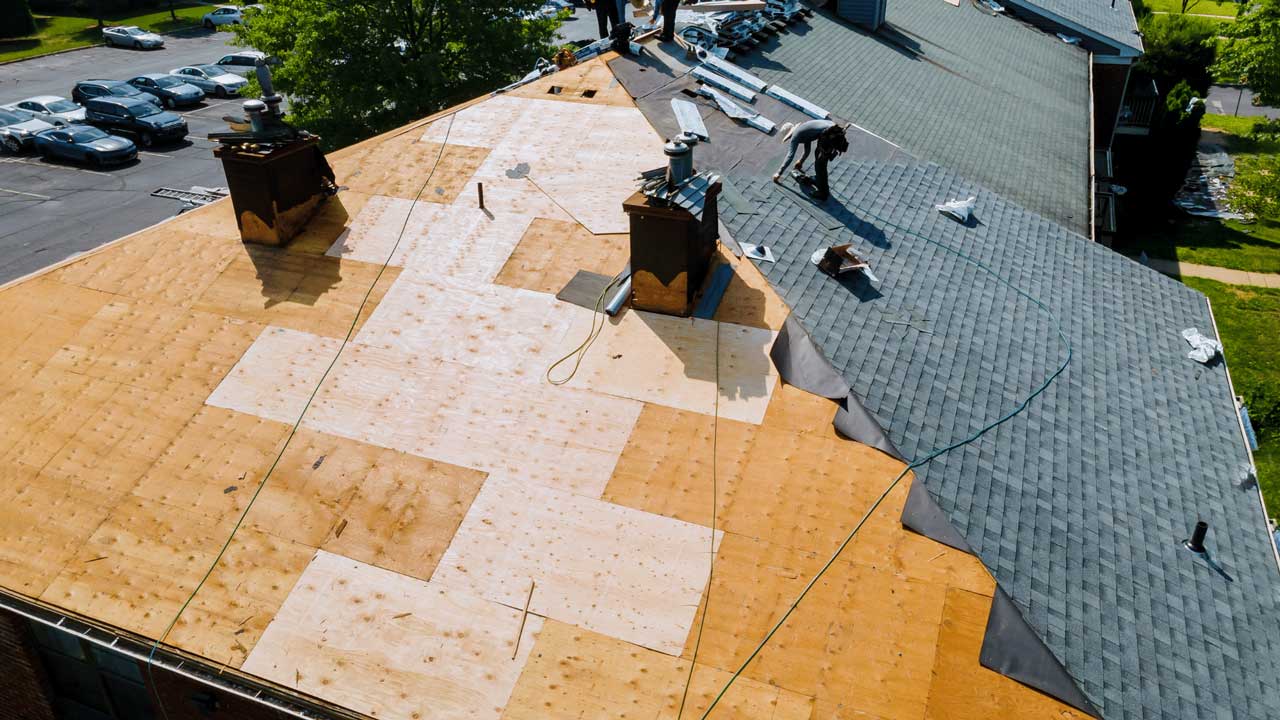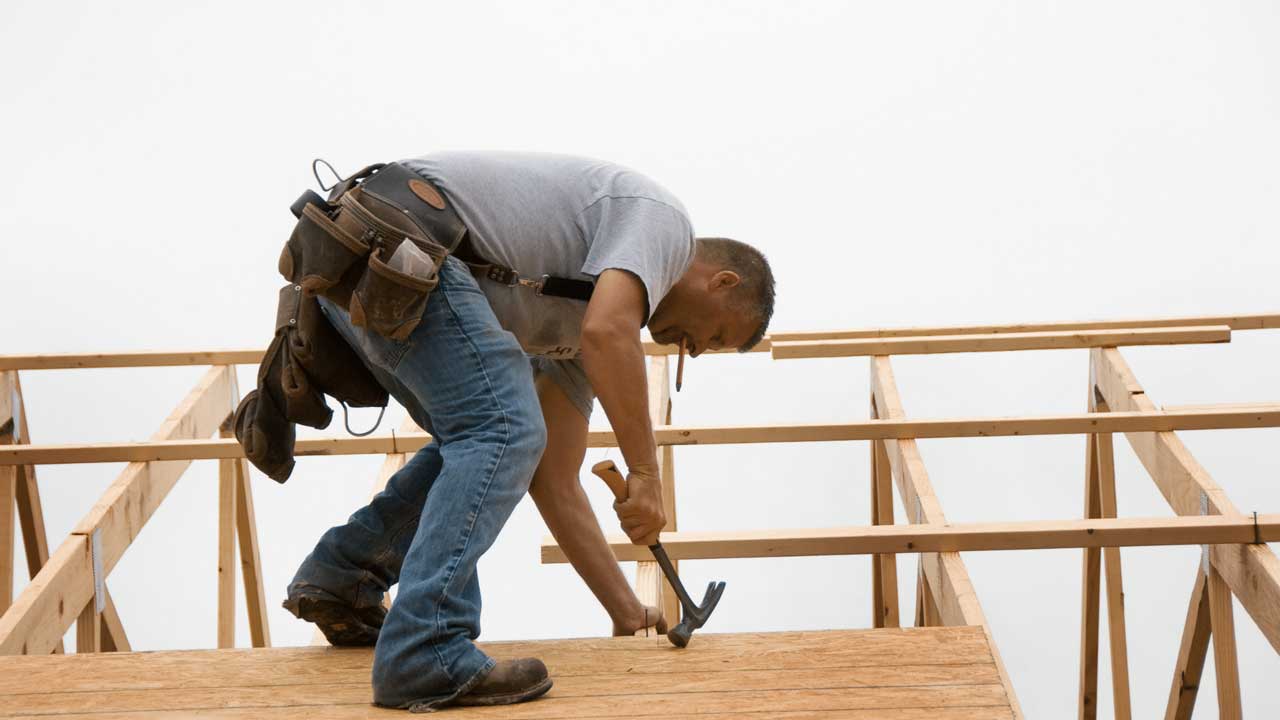Hailstorms are a common occurrence in Texas and they can cause significant damage to roofs. Given the importance of rooftop protection, it is important for Texans to understand when their roof should be replaced after hail damage has occurred. This article examines the circumstances that indicate when a roof needs replacing due to hail damage and explores what steps need to be taken by homeowners in order to ensure the best outcome.
It provides an overview of how insurance companies typically handle claims related to hail damages and discusses what can be done in cases where no insurance coverage exists. Finally, this article outlines some tips for finding reliable contractors who specialize in roof replacement after hail damage has occurred.
By understanding these issues, Texans will have the information needed to make informed decisions about their roofing needs following a hailstorm event.

Assessing The Extent Of Hail Damage
In order to determine the extent of roof damage caused by hail, an experienced roofer must inspect the entire surface. The inspection should include examination of shingles, flashing and other components vulnerable to hail impact. Any visual evidence of cracking or splitting on these surfaces is a red flag indicating potential for significant underlying damage.
Once the initial assessment has been conducted, additional methods such as infrared imaging can be used to detect moisture within walls or insulation that may not be visible during a regular inspection. These techniques are beneficial in determining if there is any hidden water intrusion which could lead to further interior damages. When this type of investigation reveals prolonged exposure to weather conditions, it usually warrants replacement rather than repair alone.
Documenting Evidence Of Hail Damage
In order to determine whether a roof needs replacing due to hail damage in Texas, evidence must be documented. Homeowners should inspect the exterior of their homes for any signs of storm damage such as dents on siding and shingles, broken branches or tree limbs, cracked paint, torn screens, etc.
The interior should also be inspected for water marks or stains on walls and ceilings that could indicate interior leaks from damaged roofs. Photographs can be taken of the external damages which will serve as evidence when filing an insurance claim with the homeowner’s insurer.
Once all the required documents have been collected and photographs taken, it is important to contact a qualified roof inspector who specializes in hail damage assessment to review the property and assess the extent of damages incurred by hailstorms. An experienced contractor or roofer may also offer advice about necessary repairs or replacement if needed after reviewing all documentation gathered during this process.
Filing An Insurance Claim
In Texas, filing an insurance claim after hail damage is the first step to replacing a roof. Following an inspection of the property and assessment of damages, it is important to contact one’s insurance provider promptly in order to begin the claims process.
All pertinent information should be provided to the insurer, such as photos of any visible damages, documentation from contractors providing repair estimates, etc. After submitting this information, insurers will typically make their own independent determination as to whether or not they will cover the cost of repairs and/or replacement.
It may take some time for insurers to reach a decision regarding coverage; therefore patience is advised. Once determined eligible for coverage on the part of the insurer, a settlement offer can then be made that includes payment for all associated costs related to repairing or replacing roofs due to hail damage in Texas.

Understanding Your Insurance Coverage
In the event of hail damage, it is important to understand your insurance coverage in order to determine when a roof should be replaced. Texas weather can cause significant damage due to hail storms and other extreme weather events. Homeowners must contact their insurance company immediately after experiencing such an incident to start the claim process. The adjuster will come out and inspect the home, documenting all damages they find before estimating repair costs.
Typically, most insurers require that roofs with minor or moderate damage are repaired instead of being fully replaced, however severe cases may necessitate a complete replacement. In some circumstances, if there is extensive damage that could lead to future problems, then replacing the entire roof may be recommended by the adjuster as part of the approved claim work.
It is also possible for homeowners to get independent evaluations from contractors prior to agreeing on how much repairs cost and which procedures need to be taken in order for them to be covered by their policy. Understanding this information allows homeowners to make informed decisions regarding their property and finances while helping ensure they receive fair compensation from their insurer.
Choosing A Reputable Roofing Contractor
Once the insurance claim is approved and an estimate is received on the cost of repairs or replacement, it is important to find a reputable roofing contractor for the project. To ensure quality workmanship and materials, research contractors thoroughly before making any decisions.
It can be beneficial to check with local government agencies such as the Better Business Bureau (BBB) or other consumer protection organizations for information about companies in your area that specialize in hail damage repair. Ask friends, family members, neighbors and colleagues if they have used any particular company or know of one who has had good experiences. Additionally, contact references provided by potential contractors and ask them questions regarding their experience with the company’s services.
When selecting a contractor, make sure they are licensed and insured; additionally inquire whether they provide warranties on both labor and products being used in the project. It is also advisable to get estimates from at least three different professionals so you have options when deciding which service provider best fits your needs.
Different Roof Replacement Options
Replacing a roof after hail damage in Texas can involve various materials and methods, depending on the type of building. Asphalt shingles are an economical option for residential homes that have experienced hail damage as they are lightweight, durable, and easy to install. Metal roofs provide high durability, low maintenance requirements, and long-term sustainability but come with higher installation costs than asphalt shingles.
Clay or concrete tiles offer excellent weather resistance and insulation properties but require specialized installation techniques due to their heavy weight. Similarly, slate is another strong material resistant to extreme weather conditions but requires additional labor during installation.
Ultimately, when deciding which roof replacement option is best for a particular situation in Texas after hail damage has occurred, homeowners should consider factors such as cost, longevity of the product being used, ease of installation and repair needs when making their decision.

Cost Considerations For Replacing A Roof
The cost of replacing a roof in Texas after hail damage will depend on several factors, including the size and type of roofing material. The overall condition of the existing roof, as well as any additional repairs or upgrades needed for safety reasons, are also important considerations when determining the total cost.
Additionally, labor costs may vary depending on the complexity of the project and local rates. Therefore, it is essential to get multiple estimates from qualified professionals before making a decision about whether or not to replace your roof following hail damage.
When evaluating potential contractors for a roof replacement job, homeowners should consider not only their price but also any warranties they offer. It is important to look beyond just the initial installation fees and ensure that quality materials are being used with appropriate insurance coverage so there won’t be unexpected expenses down the line.
Furthermore, if possible find out how long each contractor has been in business as this can provide an indication of their experience level and reliability. Taking these steps can help minimize financial surprises during what is likely already an expensive repair process due to hail damage
